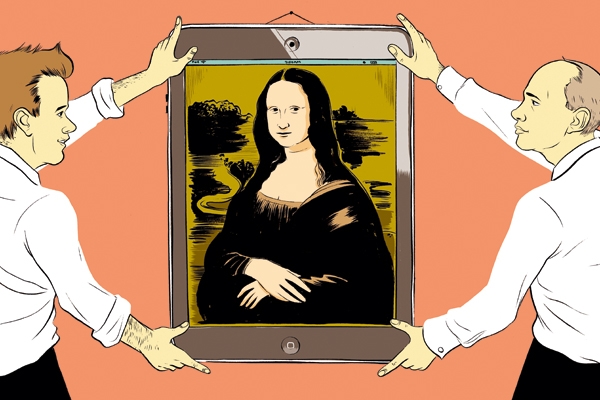The best way to view some of the world’s greatest works of art is to go nowhere near them. Like other celebrities, the most famous paintings are hard to get close to and there are few less spiritual experiences than being cattle-prodded as part of a crowd through an overpacked exhibition. You may visit in the hope of communing with legendary art but, as often as not, gallery-going is anti-contemplative.
While there is no way of replicating the experience of standing in front of a masterpiece, technology can at least allow you your personal space. Take Google Art Project, for example, a collaboration between the omnivorous internet search company and 151 museums, galleries and collections in 40 different countries. Using its Street View technology, viewers can ‘walk’ through the National Gallery, the Uffizi in Florence or the Met in New York and see what is on their walls. Some of the images are displayed at a resolution of one billion pixels: that means every bulge and hollow of paint, every stray hair or artist’s thumbprint is visible — far more can be seen on your computer screen in Thimpu, Bhutan than can be seen in situ, standing behind the guard rope. All without the jostling and the chatter of the galleries themselves.
That technology can be far less inimical to art than people is something our major art institutions have long grasped. The first audio guides came into use in 1952 at the Stedelijk Museum in Amsterdam, and now the National Gallery loans 135,000 of them each year. The National was also the first British gallery to set up a digital department and in 1991 it instigated a computer ‘micro gallery’ that allowed visitors not just to plan which pictures they wanted to see but also gave detailed information about them that couldn’t fit on the standard labels.
Technology has moved beyond the conservation departments that were its first home.








Comments
Join the debate for just £1 a month
Be part of the conversation with other Spectator readers by getting your first three months for £3.
UNLOCK ACCESS Just £1 a monthAlready a subscriber? Log in